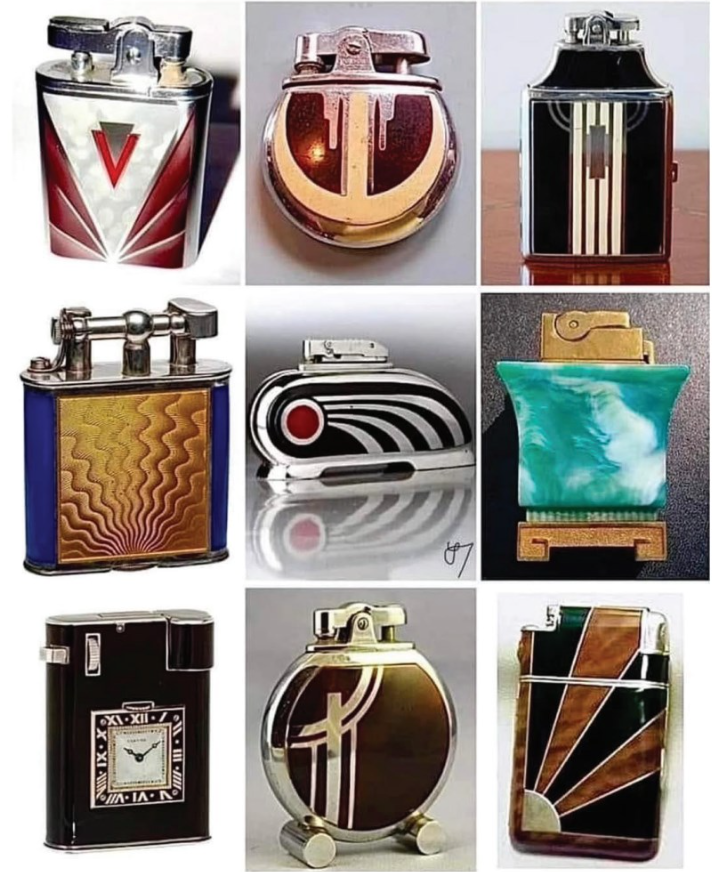HOT STUFF
Live Beautifully
When Using Only The Best To Heat Things Up

Lighters took off in the early 20th century with technological advancements that made them compact, safe, and easy to use. The invention of ferrocerium—a synthetic spark-producing metal—enabled the creation of sleek, pocket-friendly designs. Ronson patented the first automatic lighter in 1926, while Zippo introduced its durable, windproof flip-top model in 1933, making lighters must-have accessories.
Their popularity soared during World War II when Zippos became standard issue for American soldiers, solidifying their reputation for reliability. After the war, lighters evolved into symbols of sophistication, frequently seen in Hollywood films as part of a suave character’s persona. Luxury brands embraced them, crafting gold and silver versions that became collectibles. Whether in a gentleman’s pocket or a woman’s evening clutch, the lighter became more than a tool—it was an emblem of style and status.
Here is an excerpt from CIGARS: A Biography, written by Aaron Sigmond, THE GOLD STANDARD—the oft-described “Rolls-Royce” of soft-flame cigar lighters since its debut in 1978—is the dual-flame, dual-tank Caran d’Ache de Genève, a true connoisseur’s accessory.
A very close, far more readily available second choice is les grande briquets de S.T. Dupont, Paris. For decades, including during the 1990s Cigar Boom, when they gained great popularity as a status symbol, S.T. Dupont’s were offered in a wide-ranging lineup of sizes, from the squat Gatsby to the classique Ligne 2, and the (typically limited-edition) Jeroboam table lighters. The Gatsby, introduced in 1989, was discontinued around 2010. For a moment there was the diminutive Soubreny model, smaller than the Gatsby; that line lasted only a fleeting decade (1994–2004), replaced by the Ligne 8 range, launched in 2008.
Remarkably, Maison S.T. Dupont lighters, introduced in 1941 (to a rarefied few), are bored from a single ingot of metal (initially, aluminum; from 1958–63, 18-karat gold with 3 percent brass; thereafter, solid brass). They’re composed of more than 70 pieces each; their production requires between 500 and 600 steps; and it can take four to five months to manufacture a single piece. The first S.T. Dupont lighters (Ligne 1, originally petrol; clean-burning butane models weren’t offered until 1952) were the fatuitous, inadvertent outcome of a commission made in 1941 by H.H. the Maharaja of Patiala, Sir Bhupinder Singh, a cigar smoker, of 100 minaudières (small handbags, likely for his 10 “senior” wives and some of his preferred consorts (as one has). He fathered 83 children. Busy man, that Maharaja). The far more harmonically proportioned “Le Grand Dupont” Ligne 2 debuted in 1977 and was an instant classic; the more svelte Caran d’Ache followed the next year, making the two 1970s commercial Swiss luxury design contemporaries.
Along the way, S.T. Dupont lighters have been found in the pocketbooks of Audrey Hepburn, Marilyn Monroe, Jacqueline Bouvier Kennedy Onassis and Her Grace, the Duchess of Windsor, as well as the trouser pockets of HRH the Duke of Windsor, Sir Winston Churchill, John D. Rockefeller, Humphrey Bogart and Pablo Picasso—and those of Daniel Craig as James Bond, too.
From a historical vantage, the Dunhill Aquarium table lighters, Unique and Rollagas lighters collectively are the acme of innovation and design originality: Dunhill x Tiffany & Co.’s honeycomb from the 1940s and the Dunhill x Andrew Grima lighters from the ’60s are simply next level. Then there are those from les grandes maisons de joaillerie Cartier, Van Cleef & Arpels and Bulgari, as well as vintage lighters from haute horlogerie maisons Patek Philippe and Vacheron Constantin.
There are white-hot torch lighters too, of course, though these are widely debated by cigar connoisseurs, some of whom are adamant that such lighters scorch the tobacco adversely. Regardless of one’s position, other than early Dunhill (the Turbo Unique, alligator-wrapped and rhodium-plated) and Dupont torch lighter examples, overall, they are far less collectible than soft-flame lighters. They are windproof jets, though, so naturally they come in handy now and again—they’re ideal on a boat or in a pinch elsewhere outdoors. Also, speaking from experience, torch lighters are far easier to burn oneself with—ouch.




